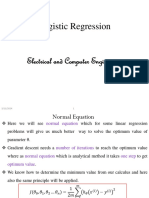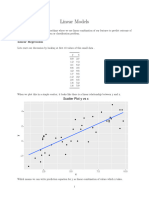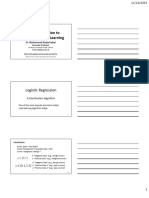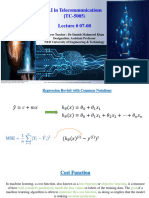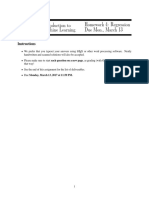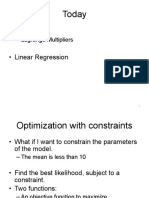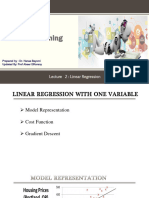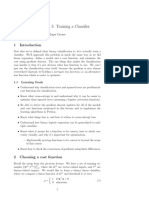0% found this document useful (0 votes)
45 views5 pagesLogisticRegression ExercisesSolutions
The document contains exercises and solutions related to logistic regression, covering topics such as the sigmoid function, decision boundaries, cost functions, gradient descent, model evaluation, and regularization. Each exercise includes mathematical expressions, calculations, and explanations to illustrate key concepts in logistic regression. The document serves as a comprehensive guide for understanding and applying logistic regression techniques.
Uploaded by
qpd4khf7yqCopyright
© © All Rights Reserved
We take content rights seriously. If you suspect this is your content, claim it here.
Available Formats
Download as PDF, TXT or read online on Scribd
0% found this document useful (0 votes)
45 views5 pagesLogisticRegression ExercisesSolutions
The document contains exercises and solutions related to logistic regression, covering topics such as the sigmoid function, decision boundaries, cost functions, gradient descent, model evaluation, and regularization. Each exercise includes mathematical expressions, calculations, and explanations to illustrate key concepts in logistic regression. The document serves as a comprehensive guide for understanding and applying logistic regression techniques.
Uploaded by
qpd4khf7yqCopyright
© © All Rights Reserved
We take content rights seriously. If you suspect this is your content, claim it here.
Available Formats
Download as PDF, TXT or read online on Scribd
/ 5


